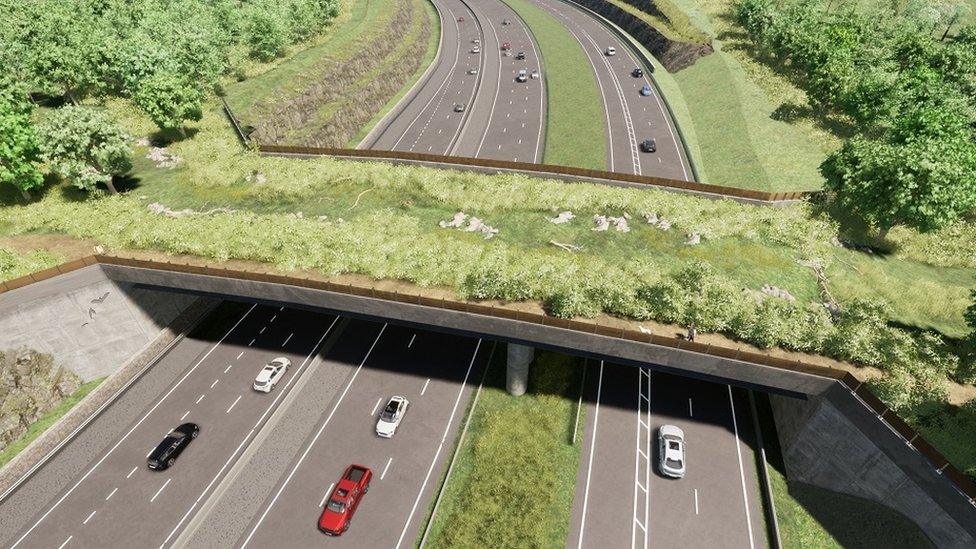Roman 'service station' found by archaeologists
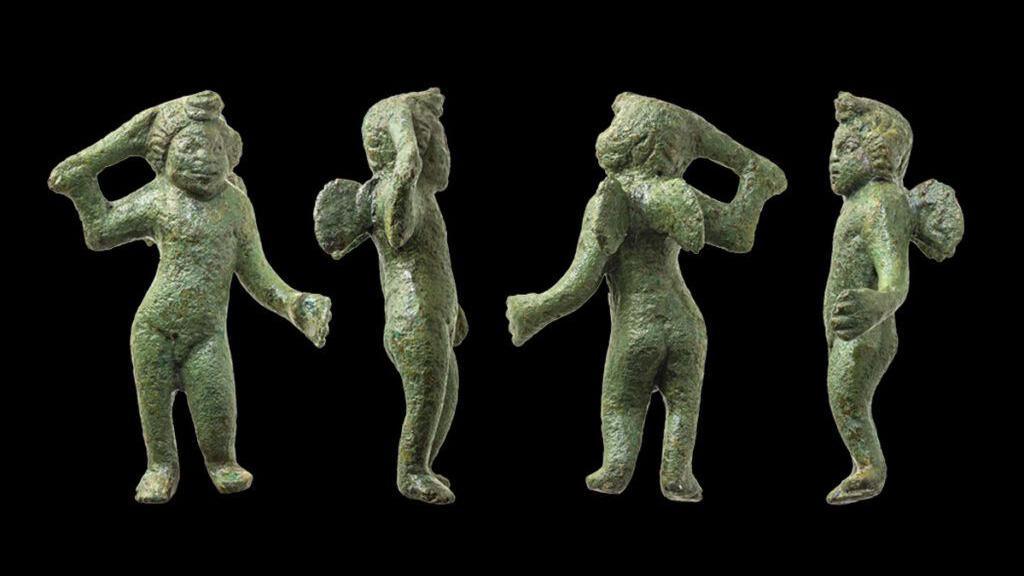
A Roman Cupid figurine was one of the artefacts found on the A417 in the Cotswolds
- Published
A Roman "service station" may have been found on the site of a major road development, archaeologists say.
Some of the pieces found at the A417 in the Cotswolds are from the Neolithic period, dating back 12,000 years.
The items, which include a rare cupid figurine, Roman nail cleaner, pottery, coins and jewellery, went on display at a public event held at Gloucester Guildhall on 11 May.
Alex Thompson, project manager from Oxford Cotswold Archaeology, said they believe the items may have been used by people travelling between settlements.
"We have a nice Roman settlement and it lies on Ermin Street, the road between Roman Cirencester and Gloucester," said Mr Thompson.
"We think that our settlement was being used to help with people that were travelling along the road and probably something to do with horses."
One of the theories is that the settlement may have been used for people to stop by to have their horses cared for or exchanged.
"We have a nice Roman building that may have been used as stabling or potentially as somewhere where you could stay the night and have your horse looked after," he added."
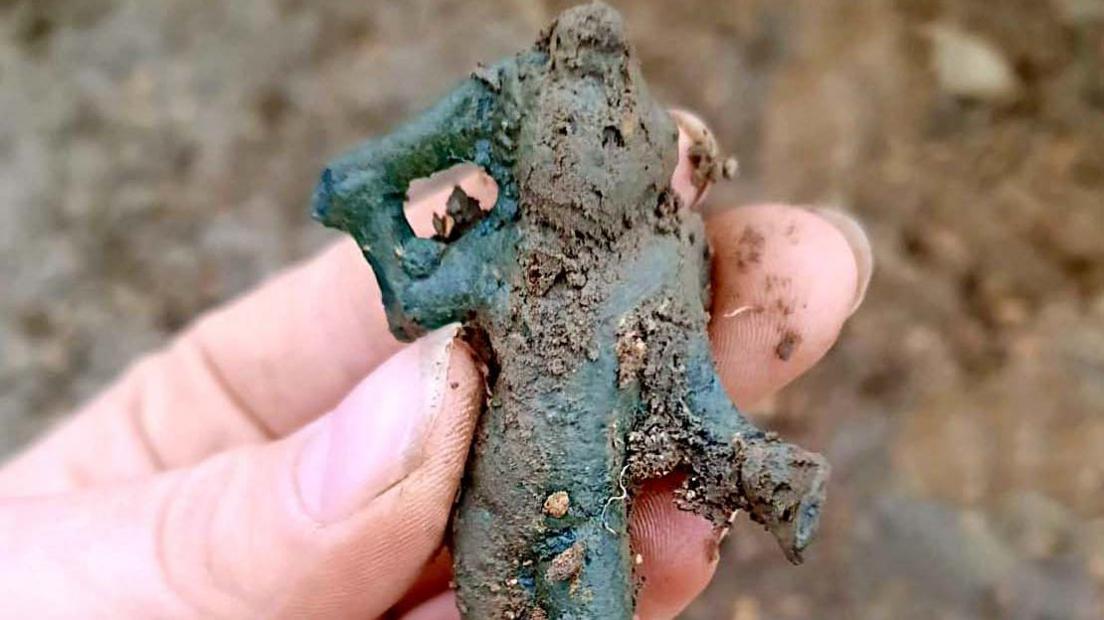
The small Cupid figurine, made from copper alloy, is thought to have been of high value
The pieces date from the Mesolithic, Neolithic, Bronze Age, Iron Age, Roman periods, and the Second World War.
One of the the most unusual finds from the dig was a small Cupid figurine from the Roman period, said Mr Thompson.
Found during the excavation phase of the dig, the figurine is 7cm (2.7in) in height and is made from copper alloy.
The figurine is a depiction of Cupid in the style of Hercules.
"It represents the power of love over even the strongest Heroes. It was probably a love token," added Mr Thompson.
"It wouldn't have been cheap. It's a really unusual and special find."
Of more than a thousand metal figurines from across Roman Britain, some 33 are known to depict Cupid, although this example appears to be the first to show Cupid as Hercules.
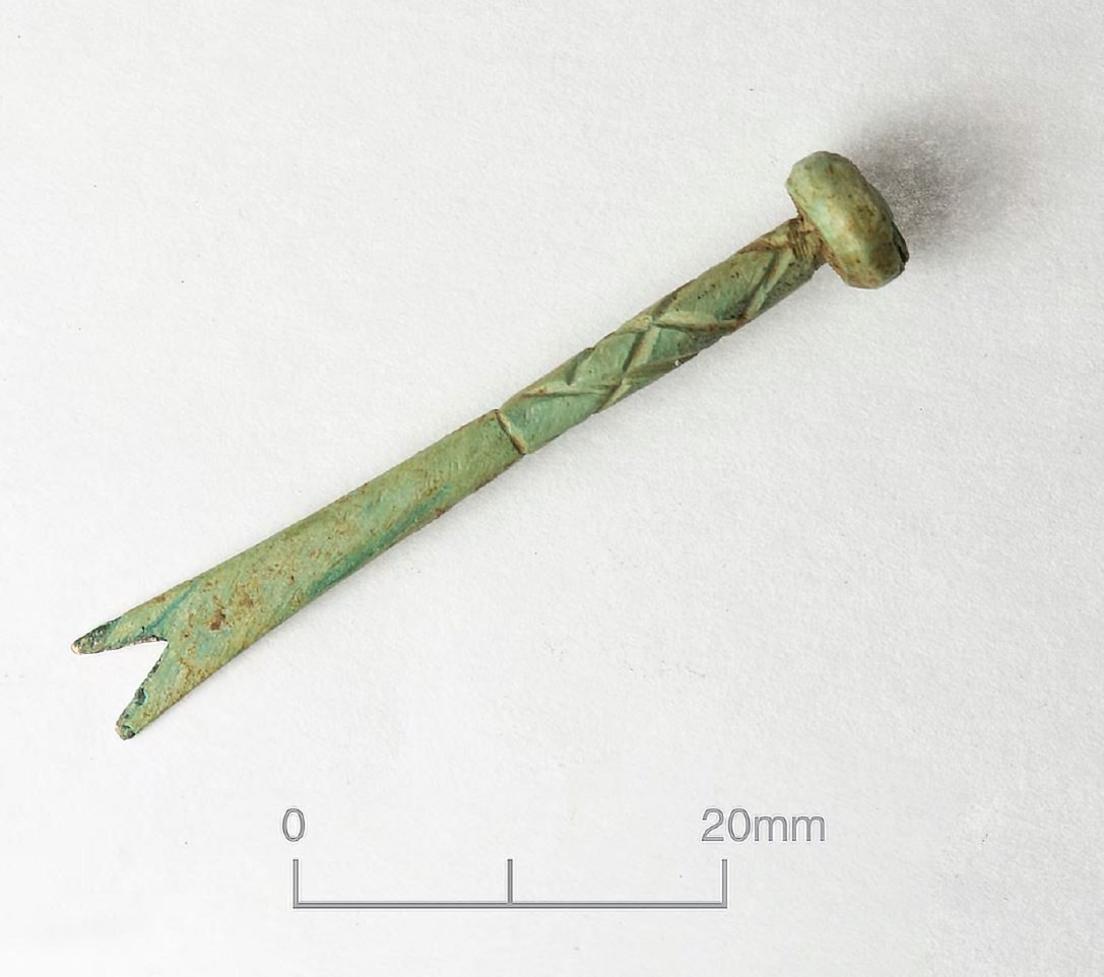
The nail cleaner is an example of some of the hygiene tools used by Romans
Archaeologists also unearthed a Roman nail cleaner.
According to Oxford Cotswold Archaeologists, Roman nail cleaners come in a variety of forms.
The one found in the A417 is a distinctive type which integrates a disc-shaped bone bead at its neck. This form has a pronounced western British distribution.
"The Romans were very clean people," said Mr Thompson.
"So you quite often find nail cleaners, small cosmetic sets and things like that."

Archaeologists found a Trumpet type brooch from the Roman period
The team also discovered a number of brooches - a commonly found piece of Roman jewellery.
Mr Thompson said the copper alloy brooches were likely to belong to the working people of the settlement.
"An archaeologist may only find something like that once in their career," he said.
"But it's the whole story that we're really interested in - it's how you draw those all together to create a narrative."
Mr Thompson said the team hopes to transfer the artefacts to the Corinium museum in Cirencester.
Follow BBC Gloucestershire on Facebook, external, X, external and Instagram, external. Send your story ideas to us on email or via WhatsApp on 0800 313 4630.
Related topics
- Published7 May 2024
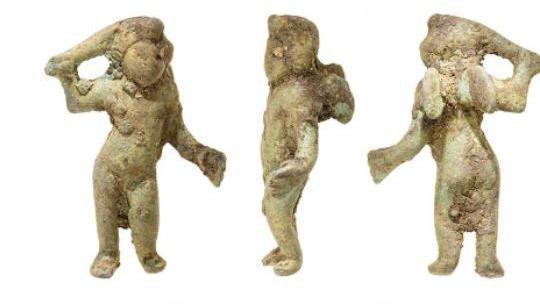
- Published30 April 2024
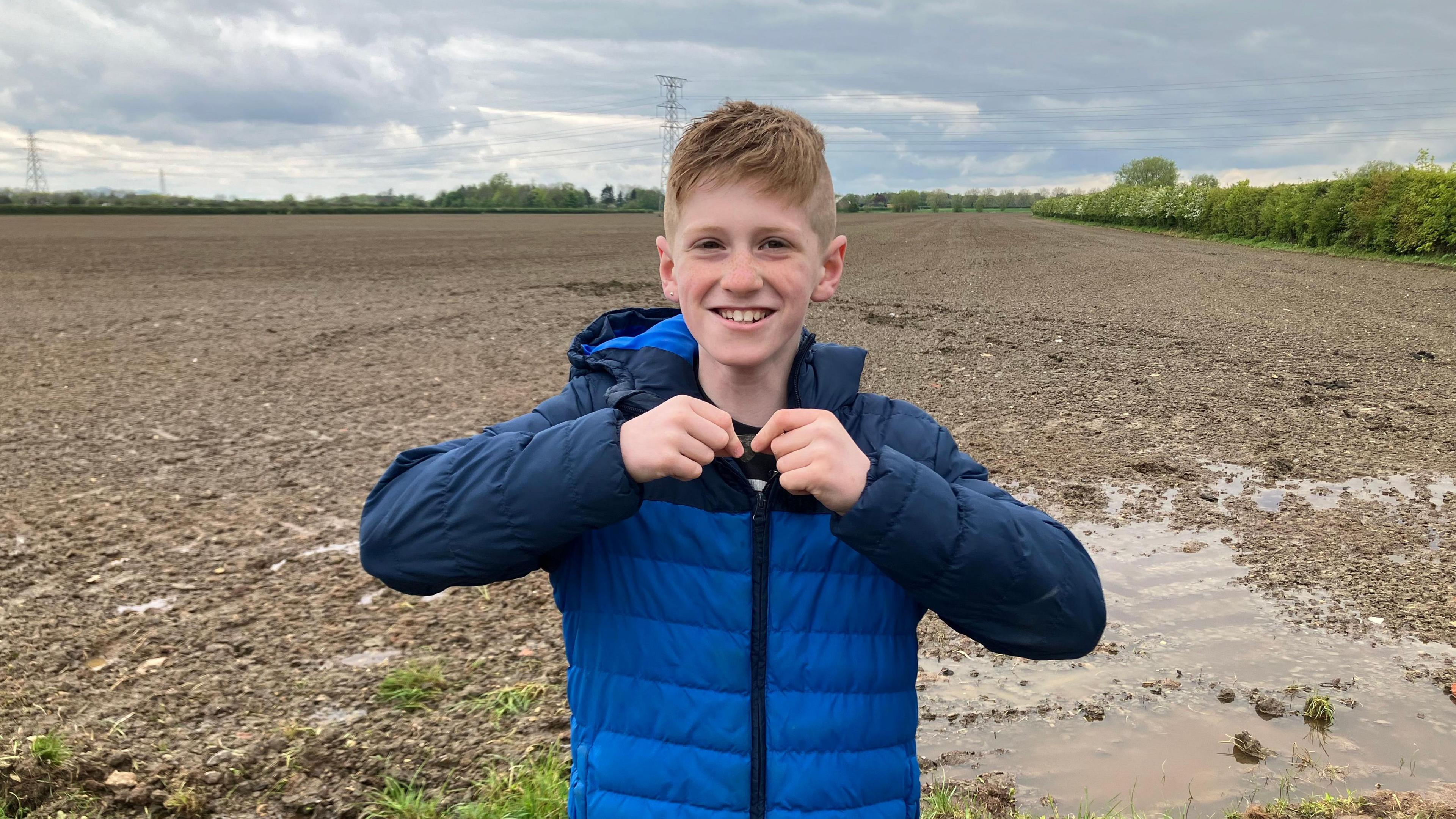
- Published4 January 2024
